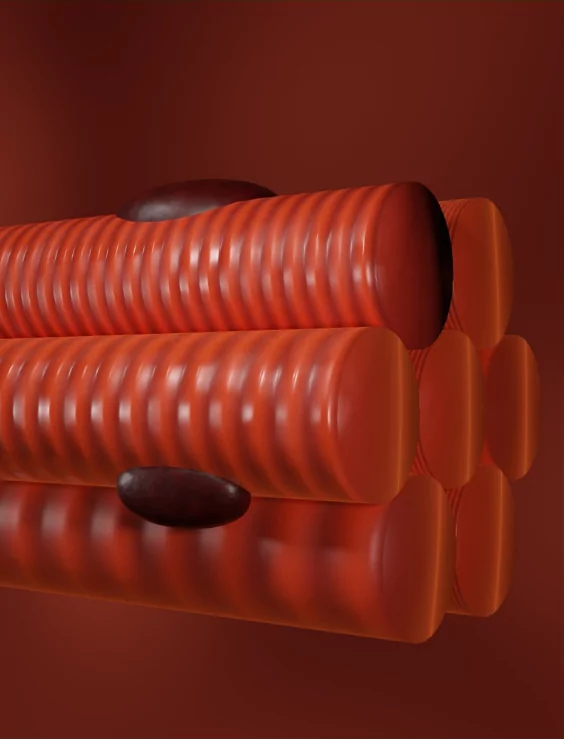We all know that exercise is important for our health and wellbeing. However, improper exercise or overtraining can lead to painful muscle injuries that set us back for days, weeks, or even months. In this blog post, we’ll take a look at some of the most common muscle injuries people experience and provide tips on how to avoid them with smart training.
Hamstring Strain
The hamstring muscle group in the back of the thigh is notorious for strains and tears. Hamstring strains often occur when sprinting or performing high intensity exercises like deadlifts. You feel a sudden sharp pain in your hamstring coupled with inflammation and bruising. Mild strains may heal within a few weeks with rest, icing, compression, and gentle stretches. But severe tears can keep you out of commission for over 6 months.
To prevent hamstring strain:
- Warm up thoroughly with dynamic stretches before workouts
- Strengthen your hamstrings with exercises like weighted deadlifts and Romanian deadlifts
- Build flexibility through hamstring stretches like forward folds and pyramid poses
- Don’t sharply increase your running intensity or mileage
- Use a foam roller on your hamstrings to alleviate muscle tension
Calf Strain
Calf strains happen as a result of overloading the calf muscle, often when sprinting or jumping. You may hear a “pop” sound at the time of injury. Symptoms include pain when pointing your toe upwards, stiffness, swelling, and bruising. Mild calf strains heal relatively quickly within 2 to 6 weeks. However full recovery can take several months if tendons rupture or you have a severe tear.
To avoid calf strains:
- Warm up your calves properly before intense activities
- Incrementally increase speed and incline when running rather than all at once
- Avoid doing repetitive motions such as bouncing while stretching
- Ice calves after challenging workouts when muscle fatigue sets in
- Ensure you have proper running shoes that provide support and absorb shock
Shin Splints
If you feel pain along the tibia or shin bone when running, you likely have shin splints. Tiny microtears in the muscle tissue surrounding the shin bone cause inflammation and irritation. Shin splints indicate issues with overuse, muscle imbalances, or poor biomechanics. Letting them become severe can mean hairline stress fractures in your shins.
Some tips to avoid shin splints:
- Replace running shoes every 300-500 miles to ensure proper support and padding
- Build rest and cross training into your program to prevent overuse
- Strengthen muscles in the hips, glutes, and ankles to correct imbalances
- Run on softer surfaces rather than concrete whenever possible
- Improve run form by landing lightly with bent knees to absorb shock
Rotator Cuff Injury
The rotator cuff is comprised of muscles and tendons surrounding the shoulder joint. Rotator cuff injuries include tendonitis, strain, and full or partial tears. They often result from repetitive shoulder motions in sports like baseball, tennis, and swimming. Symptoms include shoulder pain and weakness coupled with limited mobility. You may also experience tenderness, swelling, bruising, or clicking sensations.
Here’s how to prevent rotator cuff trouble:
- Warm up shoulders properly with stretches and light resisted motions
- Build rotator cuff strength using resistance bands and lightweight lateral raises
- Avoid exercising through shoulder pain - rest injured areas
- Ensure proper form when doing overhead lifts or serves in sports
- Sleep on your back or side to avoid shoulder strain sleeping on stomach
Groin Pull
Groin muscles commonly get pulled when changing direction rapidly during intense sports like soccer, football, hockey, basketball and more. You may hear a popping sound at the time of injury and feel weakness coupled with sudden sharp groin pain. Swelling, stiffness, and bruising can also occur near the inner thigh area. Letting a groin strain heal fully before intense activity is crucial, as recurrence risk is high.
Some tips for preventing groin pulls include:
- Thoroughly warm up and stretch the groin before activity via butterflies, lunges, and squats
- Strengthen groin muscles with resistance band exercises like hip adductions and monster walks
- Get sports massages to release tension in the hip and groin regions
- Use proper form when rapidly changing direction during sport
- Wear a groin support wrap or brace during intense training sessions
The takeaway...
Muscle injuries are unfortunately common, especially when we push ourselves during physical activity. But there are straightforward ways to prevent strain, tear, and overuse injuries in the calves, hamstrings, groin and shoulder areas. Follow these injury prevention tips, and be sure to gradually build up intensity in your workouts. Implementing regular strength training, stretching, and foam rolling will also help reduce injury risk and keep those muscles flexible and strong!







%20(1).png)
.png)
%20(1).png)


%20(1).png)




%201.png)
